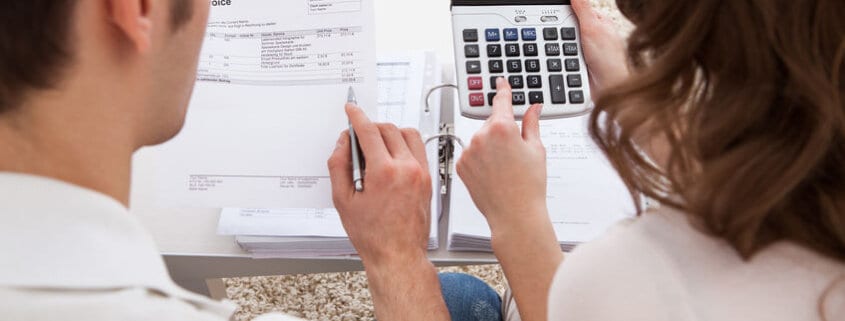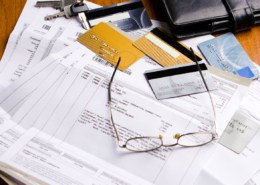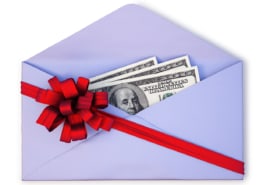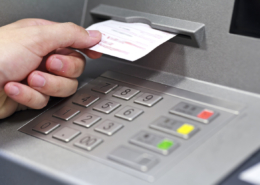How to Live on a Budget and Love It
For many years I would have nothing to do with a budget because I couldn’t stand the idea of anyone—or anything—telling me how to spend my money. And where did that get me? Into one big financial mess.
Every month, when I ran out of money, I would turn to MasterCard and Visa for a bailout. To me, any available credit was the same as income. It was my money to do with as I found necessary. Really bad idea.
I learned from going through that experience and finding my way back to solvency that, as much as we may loathe it, a budget is a ticket to financial happiness―not the straitjacket I feared it would be. I’ve come to prefer calling this a “spending plan” rather than a budget, but the terms are interchangeable. It’s just a way to pre-spend your income on paper first.
A good spending plan gives every dollar a specific job to do. Once you have it just the way you want it, the plan becomes a handy road map for keeping your finances on track.
So, take a deep breath, and let’s walk through the basics for how to create a successful budget that you can love.
Step 1
Write down your total take-home monthly income
This is the easy part. Jot down what you earn—what you see in your paycheck. This is also called “net-income” or “take-home pay.” Because many expenses are billed monthly, it makes good sense to use your monthly income to create your budget.
Pro Tip
Here’s a cheat sheet to help you quickly convert your net take-home pay to your average monthly income:
- paid weekly: multiply your weekly net income by 4.333
- paid every other week: multiply your biweekly net income by 2.167
- paid twice a month: multiply your semimonthly net income by 2
- paid quarterly: divide your quarterly net income by 3
Step 2
Write down your fixed expenses
Start with fixed bills like savings, rent, mortgage, car payment, credit card debt, insurance, then factor in other monthly costs that are always the same. These are your essential fixed expenses.
Step 3
List your variable expenses
You know you’ll have these bills, but the amounts vary. Examples are your phone, utilities, food, household expenses, gasoline, medication, public transportation, shoes, and clothing. These are your variable expenses and you can assign an estimated amount to each based on past experience, rounding to the closest $10.
Step 4
List reasonable amounts for nonessential expenses
This includes entertainment, eating out, hobbies and other ways you spend money on a regular basis.
Step 5
Find the extras
Go to your checkbook register, credit card statements, Quicken reports or what have you, to see what expenses you’ve left out. You’ll likely see items for car maintenance and repair, gifts, vacations, Christmas and holidays. For items that do not recur monthly, determine the annual cost, then divide by 12 to see how much you should set aside each month to anticipate that irregular expense.
Step 6
Figure out your totals
Add up your expenses, then subtract that amount from your income. Ideally, you’ll come out in the black, with at least a little money left over. But if your expenses exceed your income, you’ll see a negative sum. Don’t panic—this is just the start of an ongoing process.
Step 7
See where you can cut
If you came up short, go back to your monthly expenses and see what you can get rid of. Look first to your nonessential expenses. Which items can you remove altogether for a while (eating out seems like a fine target; perhaps hobby expenses, for a season)? Keep going through the list, making adjustments until your total expenses are less than your income.
MORE: 23 Ways to Chop Your Grocery Bill
Step 8
Follow your spending plan as closely as possible
Track your spending every day by writing down what you spend. Does it match up with what you planned in your budget for this month?
Take notes and research ways you’ll be able to do even better next month. At month’s end, add up your actual spending and compare it with what you planned. Use this information to create the next month’s Spending Plan.
Even if you find yourself in a particularly tight financial position right now, take heart. As you pay off debts and find more ways to cut expenses, you’ll begin to sense a significant loosening of financial pressure. Soon you’ll be ready to add new categories to your spending plan for things like saving for a new car, home improvements or going back to college.
The sooner you get started, the sooner you’ll be on your way to reaching financial freedom.


















Mary, thank you for these tips. These are such simple ideas that can have such a profound effect on our finances. I am going to forward these to my son and daughter-in-law as well.